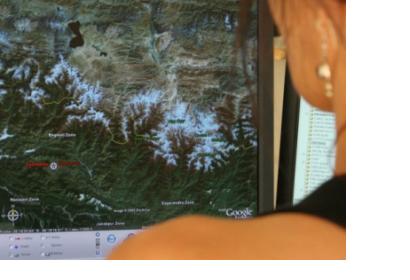KATHMANDU — Scientists announced on Monday they had combined cutting-edge gene sequencing technology with Google Earth to accurately map the spread of typhoid in Kathmandu for the first time.
The Nepalese capital was described in a 2008 study as "a typhoid fever capital of the world", with thousands of cases a year reported, but outbreaks have been hard to chart in a city where streets are rarely given names.
Researchers say they have used GPS signalling and the latest DNA sequencing techniques to plot the course of the disease -- and have discovered the source of outbreaks is usually communal water spouts.
The research, published in the journal Open Biology on Sunday, was carried out by scientists at the Vietnam-based Wellcome Trust Major Overseas Programme and the Oxford University Clinical Research units in Kathmandu and Ho Chi Minh City.
"Until now, it has been extremely difficult to study how organisms such as the typhoid-causing bacteria evolve and spread at a local level," said Stephen Baker, a scientist with Oxford University's Vietnam unit.
"Without this information, our ability to understand the transmission of these diseases has been significantly hampered.
"Now, advances in technology have allowed us for the first time to create accurate geographical and genetic maps of the spread of typhoid and trace it back to its sources."
Health workers visited typhoid patients' homes and used GPS technology to capture the exact location, which was then plotted onto Google Earth, which maps the Earth by superimposing images from satellites and aerial photography.
They took blood samples from hospitalised patients to isolate the organism -- which mutates as it spreads -- and allow analysis of its genetic make-up to identify where the disease had started.
The researchers found that people living near communal water spouts and those living at a lower elevation were at by far the greatest risk of contracting the disease.
"Improvements in infrastructure are fundamental to the control and elimination of typhoid", said Baker.
Recent advances in DNA sequencing have allowed scientists to accurately track the spread of some diseases by measuring mutations in the pathogen's DNA when the DNA replicates.

